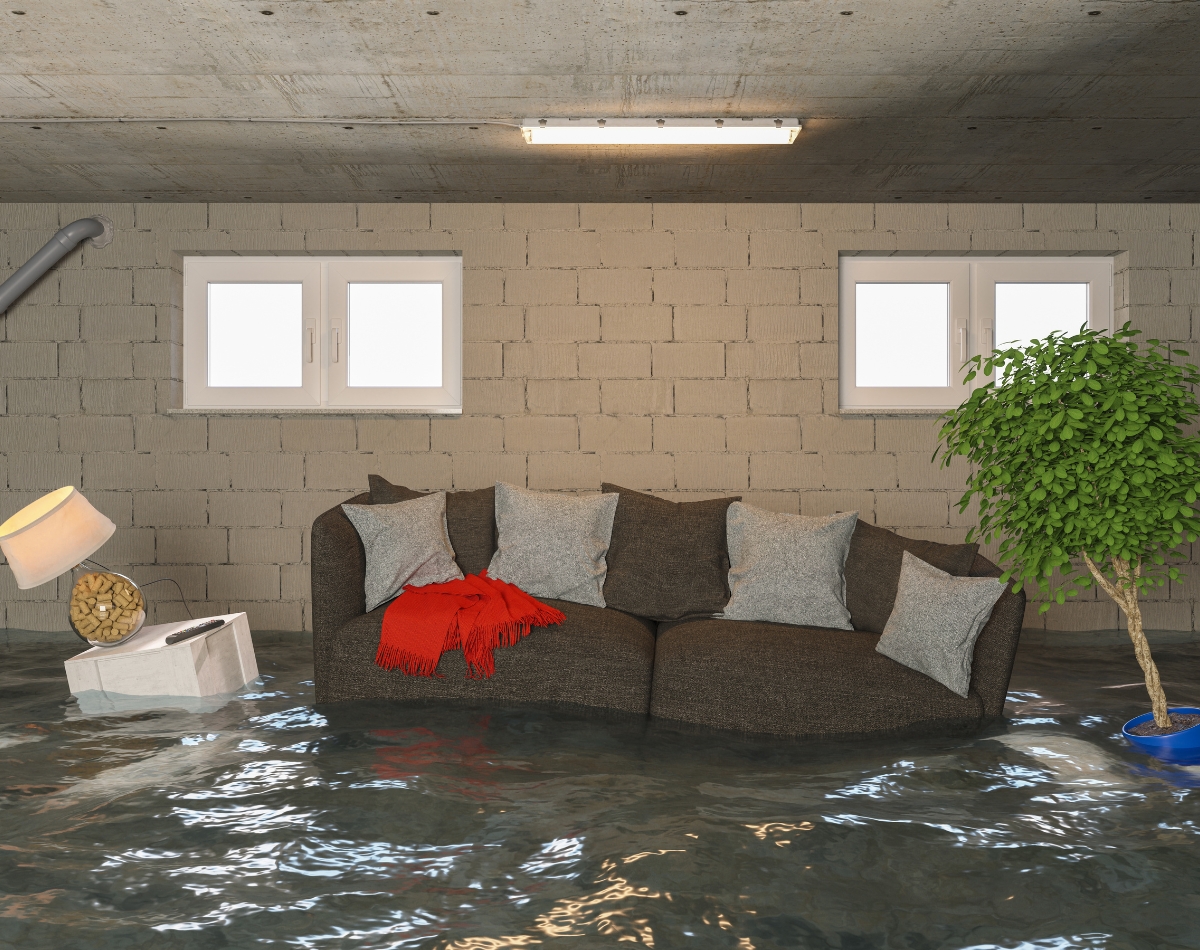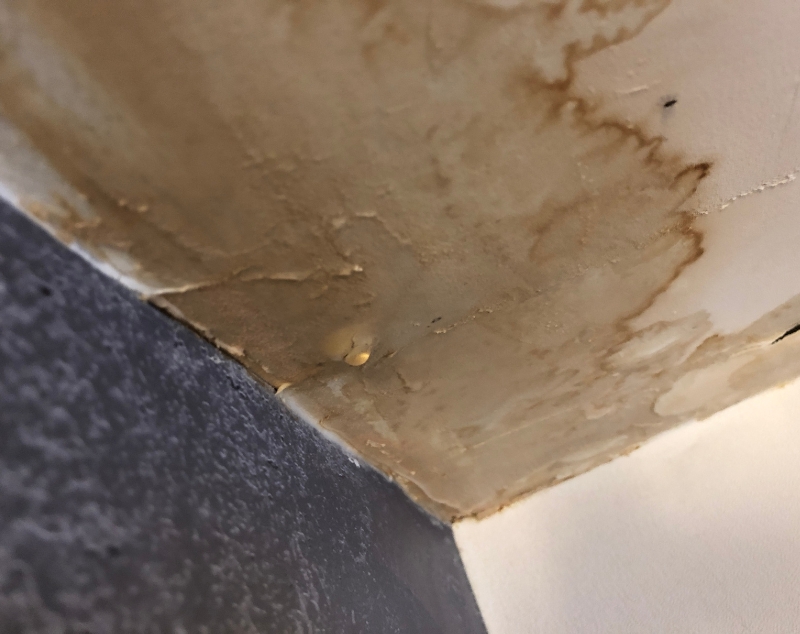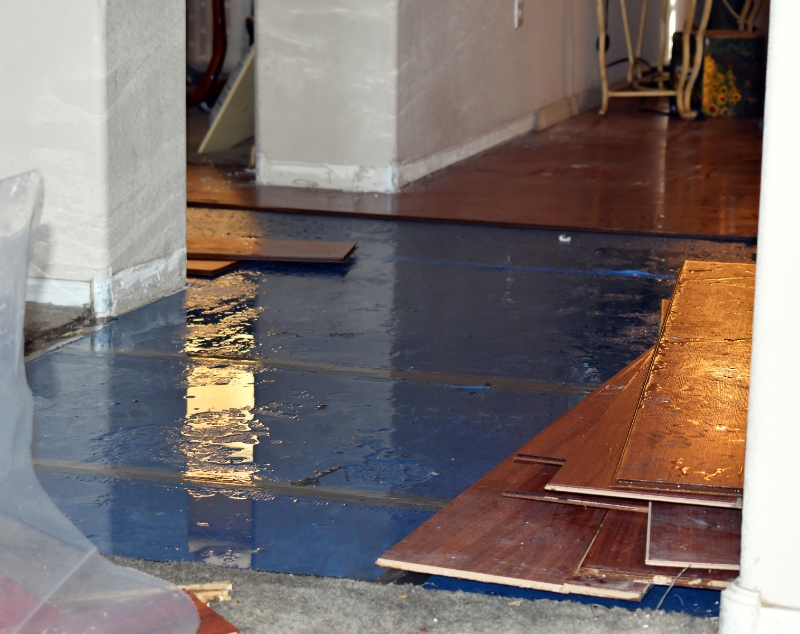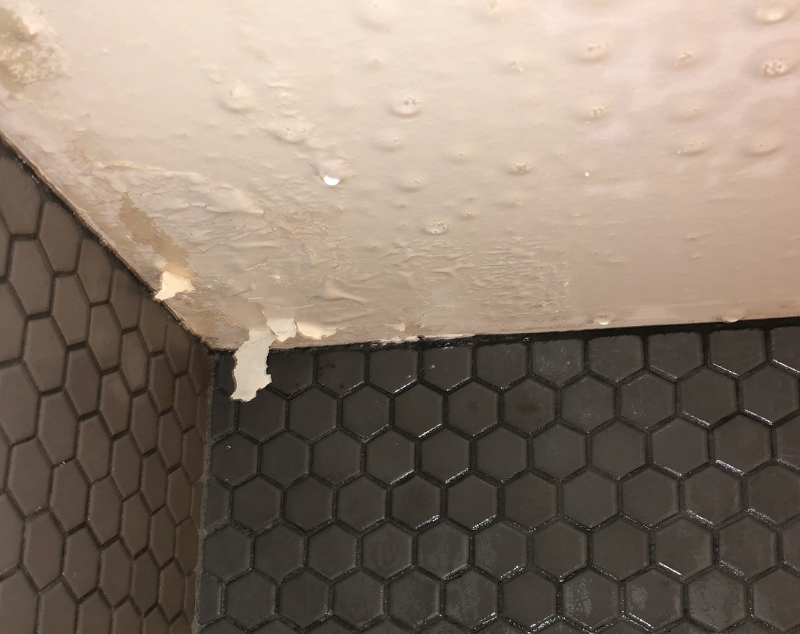
As a homeowner, it is inevitable that you will deal with water damage of some kind. Leaky toilets, aging water heaters, and frozen pipes are common occurrences in an aging home, so it’s important to know how to clean up water damage when it occurs.
Safety First
After you’ve stopped the initial deluge of water into your home, it’s time to begin the water damage restoration process. First and foremost, it is important to ensure a safe working environment for yourself and any workers.
Turn Off the Electricity
In homes with significant water damage, it is possible for electrical wiring to come into contact with moisture. This poses a danger of electric shock to workers in and around the affected area. To eliminate the possibility of electric shock, homeowners should go to their breaker box and disable the electricity for the area of the home where flooding has occurred.
Determine the Type of Water
Identifying the type of water that caused the damage is essential to assessing the proper protective equipment to wear while cleaning. Below are the different types of water and the potential threats they pose to individuals.
Clean Water (Category 1)
Clean water is water from a clean source. Leaky sinks, shower faucets, rain, snow, and water heaters can all be sources of clean water damage. This water represents no hazard to the cleaner.
Gray Water (Category 2)
Gray water is contaminated water. Water from washing machines and dishwashers, mixed with cleaners, food, or detergents is considered gray water. This type of water represents a possible hazard to the cleaner.
Black Water (Category 3)
The most dangerous category of water is black water. This water is highly contaminated and typically originates from flood water or sewage. Black water poses a significant health risk to those that come in contact with it. Professionals should be contacted when it is determined that black water is the source of your water damage.
| Types of Water | Characteristics |
| Clean Water (Category 1) | clean, no health risk |
| Grey Water (Category 2) | light contaminates, moderate health risk |
| Black Water (Category 3) | highly contaminated, high health risk |
Look for Health Risks
When assessing health risks, you should look for blackwater, mold infestation, mildew contamination, fungal spores, and bacteria growth. Areas with mold and fungal growth can pose health risks to the cleaner. In extreme situations, illness and death can occur when you’re exposed to these contaminants.
Wear Protective Equipment
M95 respirators, goggles, rubber boots, and protective gloves are essential personal protective equipment when cleaning up and restoring water damage. If you do not have access to proper protective gear, you should consult with a professional to avoid health issues and ensure proper cleanup.
Confirm There is No Structural Damage
Review and test the integrity of the structural material at the site of the water damage. Mere hours after building materials are exposed to water they can begin to deteriorate. If the structure of the home is compromised a professional should be consulted and steps should be taken to protect workers during the repair process.
Cleanup

Once you’ve ensured the site is safe and free of danger, it’s time to begin the cleanup process. Eliminating moisture is the first step. The longer your home stays wet, the more likely it is for mold, mildew, and bacteria to begin to grow. Here are some tips for starting the cleanup process:
Get Rid of Water
Key to minimizing damage is reducing the amount of standing water as soon as possible. After stemming the flow of water, use towels, sponges, and buckets to remove excess. Remove debris from any clogged drains and use submersible utility sump pumps, bilge pumps, and wet/dry vacuums to remove water out of the affected area if the volume of water is great enough to require one.
Retrieve Salvageable Items
If you’ve acted quickly enough a number of items exposed to moisture are salvageable. Wood furniture typically begins to swell and damage after only a few hours of exposure to water. Quickly removing and drying these items will help prevent loss. If fabrics are exposed to moisture, drying them as quickly as possible is key to preventing mold and mildew growth.
At this point in the process, it is a good time to document the damaged and non-salvageable items for your homeowners insurance company.
Ventilate
After removing as much standing water as possible, begin circulating air to reduce moisture and jump start the drying process. Opening windows, turning on ceiling fans, and utilizing high-powered shop fans and air movers are great ways to increase air circulation in a water-damaged home. You should keep these fans on throughout the cleanup process.
Use caution when turning on your HVAC system, as it may have been contaminated during the flooding. Have the system checked to avoid spreading mold and mildew through the entire house.
In addition to utilizing fans and your HVAC system to begin circulating air throughout the home, consider purchasing dehumidifiers to aid in the removal of moisture from the air.
Absorb Remaining Moisture
Moisture absorbing materials help draw in and capture moisture in hard-to-reach spots. Industrial spill absorbents, silica desiccants, and kitty litter are some of the readily available materials you can spread to aid in the extraction of water from the affected area. Let this material sit until the dry vacuum phase of cleanup comes later.
Remove Damaged Material

Certain porous materials can easily become saturated with water. Materials such as drywall, wood flooring, and subflooring for example should be removed once inundated with water. Flaking or peeling materials should be scraped off during this time starting with the ceiling and working down toward the floor.
Dry Vacuum / Sweep / Trash
At this point, a good deal of debris should be spread around the affected area, including pieces of recently removed building material and the moisture-absorbing desiccants. You should vacuum, scoop, or sweep up this material and dispose of it properly based on its content recyclability and effect on the environment.
Clean Hard Surfaces
Once the large debris is removed, hard surfaces should be cleaned with disinfectant soap and bleach and water solutions. These measures should kill bacteria and mold on hard surfaces and prevent future growth.
Steam Clean
Steam cleaning floors is a final step in the cleanup process. Hot water from superheated steam extracts and kills mold, bacteria, and mildew providing an additional layer of protection against future growth. Remember that fans and ventilation should be active during the entire cleaning process to ensure all affected areas dry out.
Repair and Replacement
After completing all of the cleanup steps, it is now time to begin repair and replacement. At this point new materials can be installed. In the event that the work is beyond your expertise be sure to consult an expert for restoration services to ensure proper repair and replacement.
Related Services

When water damage occurs, homeowners often experience damage on other parts of their property. Below are related services that homeowners will find valuable.
Mold Remediation
Significant water damage that remains for over 24 hours breeds mold and may require remediation services. The cost of mold remediation typically ranges between $1,373 and $3,325, with an average price of $2,347.
Gutters
Are gutters really necessary? Lack of gutters and improper installation of gutters can cause water to pool in the wrong places or drain into basements. The average cost for gutters ranges from $888 to $2,496.
How to Clean Up Your Yard After a Hurricane
Typhoons and significant weather events can not only cause water damage to your home but wreak havoc on your yard. How you clean up your yard after the hurricane is an important part of the water damage remediation process.
Help Your Lawn Recover from Flood Damage
A flood will cause water damage in your home and significant damage to your yard. In most cases, homeowners need to help their lawn recover from flood damage.
FAQ
When building material remains wet for a full 24 to 48 hours, there is a high probability that mold will appear.
Yes. Even in small instances of water damage, it is important to get rid of the cause of the leaking water. To prevent health issues, mold and bacteria growth, and structural damage, wet building material should be dried completely. Failure to treat water damage properly can result in even greater damage to your property.
Saturated drywall needs to be replaced. While drywall can withstand small amounts of water when it becomes soaked it will not return to its previous strength and should be replaced.
If you have completely stopped the original leak and the drywall maintains its structural integrity, it is okay to paint over the damage. It is recommended you use specialized paints that create a waterproof barrier and prevent the stain from returning.
Final Thoughts
The various steps in the water damage cleanup process can sometimes escalate beyond what an average homeowner can resolve. In cases with black water, mold contamination, stringent insurance requirements, and extensive damage, consult a lanscaping expert to complete the project.
Main Image Credit: Rcphotostock / Canva Pro / License